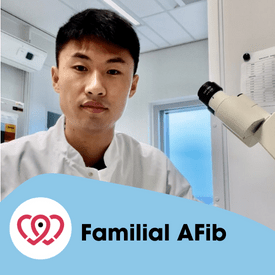New research reveals which forms of communication increase awareness and engagement among people with atrial fibrillation.
Have you ever seen a Facebook or Instagram post about a health condition which caught your eye, or not? Our new study has looked into exactly what kind of health messages encourage individuals to get involved in online health communities, especially for those living with atrial fibrillation (AF).
Researchers from the University of Amsterdam and Amsterdam UMC wanted to better understand what kinds of messages empower patients to share their own experiences, so that research and care for AF can become more personalized. The study is part of the CIRCULAR consortium, a nationwide collaboration between universities, health professionals, companies, and patient organizations. Together, they aim to place people with AF at the center of research and treatment innovation.
To do this, the researchers tested 12 different types of Facebook and Instagram posts with different communication. Some included expert advice, others shared real patient stories, and the posts either included the emotions of fear or love. All posts invited people to visit the Atrial Fibrillation Innovation Platform (AFIP), which is a non-profit organisation where patients, researchers, and care providers come together to share knowledge and improve AF treatment.
In just a month, more than 795,000 people in the Netherlands saw the messages, 18,426 visited the AFIP site, and 478 signed up to join the community.
What stood out?
- Fear-based posts got the most clicks when the topic was about protecting your health.
- Messages filled with love worked better when talking about family and relationships in keeping people on the website longer and led to more community sign-ups.
- Expert advice drove more people to visit the platform, but it was the real patient stories that helped people stay longer and inspired them to get involved.
Why does this matter? Because when patients engage, share their stories, and connect with others, it doesn’t just help themselves, it helps researchers too. Your insights can lead to better, more personalized AF treatments. You can now read the full article in Nature’s npj Digital Medicine.

“ We want to build a space where individuals feel empowered to participate. Not just in their own care, but in shaping the future of AF research. The way we communicate makes all the difference.”
Myrthe Kuipers (Lead researcher)
Do you know someone who might be interested in this?






